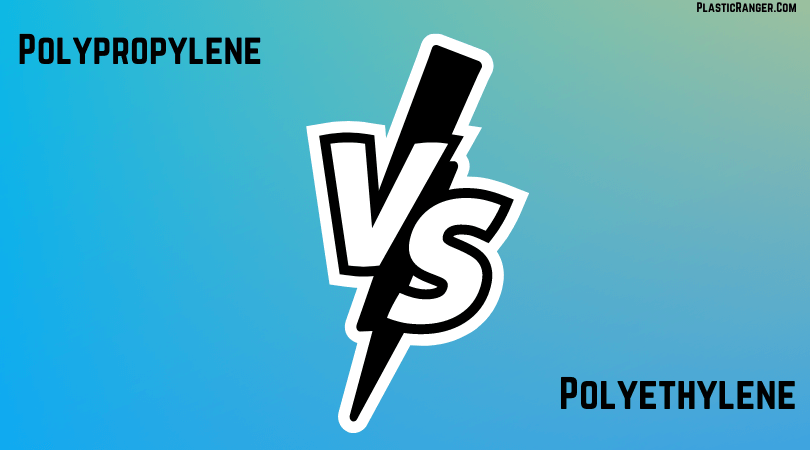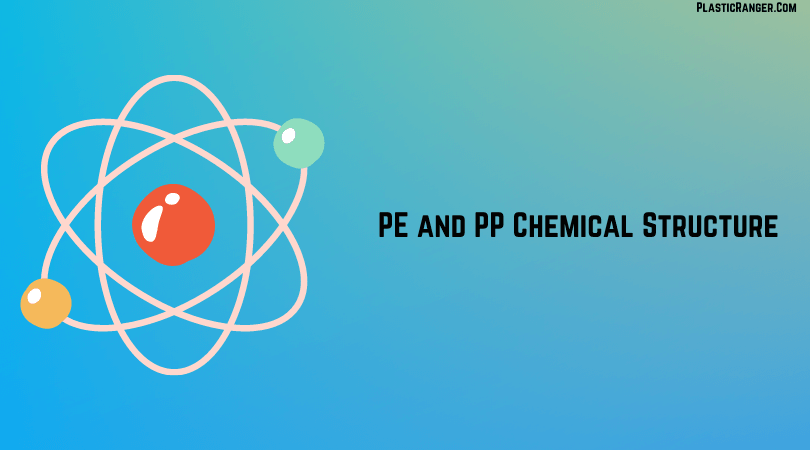
Greetings everyone! In today’s article, we’ll delve into the differences between Polypropylene and polyethylene, the two most widely manufactured and used thermoplastics globally. So, without further ado, let’s dive right in.
Polypropylene VS Polyethylene
Polypropylene, a type of polyolefin, consists of recurring propylene units. In contrast, polyethylene, also a polyolefin, can be derived from various monomers, with ethylene being the most prevalent. Among the two, Polypropylene possesses a greater tolerance for high temperatures.
What is Polypropylene?
Polypropylene, commonly called PP, is a crystalline thermoplastic composed of a mixture of distinct polypropylene monomers. Its toughness and rigidity make it highly resistant to various external factors, positioning it as one of the most widely employed thermoplastics in the plastic manufacturing sector. Polypropylene is extensively used for creating a diverse range of products across multiple industries worldwide.
Many people may not realize that many of the products they use daily are made from polypropylene plastic.
A study conducted by Fortune Business Insights revealed that the global polypropylene market size amounted to USD 78.22 billion in 2019 and is expected to experience profitable growth, reaching USD 105.49 billion by 2027.
Polypropylene is a multifaceted polymer commonly found in food packaging, consumer goods packaging, carpets, and ropes. Some typical attributes of Polypropylene include:
- High melting point
- Excellent chemical resistance
- Strong moisture resistance
- Rigidity
Owing to its high melting point, Polypropylene is suitable for applications requiring tolerance to elevated temperatures. Its moisture resistance makes it an ideal choice for food packaging, while its innate rigidity provides impressive strength and durability.
What is Polyethylene?
Polyethylene, a thermoplastic known for its diverse applications and variations in its crystalline structure, is characterized by its lightweight and durability. Consequently, it ranks among the most widely used thermoplastics worldwide, with millions of tons consumed globally. Its applications span detergent bottles, shopping bags, food packaging, and more, as it belongs to the polyolefin resins family.
It is common to slit and spin PE into synthetic fibers to alter its properties, much like rubber.
Polyethylene (C2H4)n is produced through the polymerization of ethylene monomers extracted from petroleum.
Polyethylene, available in various grades, can be customized to fulfill specific requirements. Some prevalent characteristics of polyethylene include:
- Excellent chemical resistance
- Strong moisture resistance
- High impact strength
- Flexibility
The most frequently used polyethylene grades are low-density polyethylene (LDPE) and high-density polyethylene (HDPE). LDPE, a soft and flexible polymer, is commonly employed in food packaging and grocery bags. HDPE, a more robust and rigid polymer, is typically used in bottles, pipes, and buckets.
Polyethylene VS Polypropylene: Chemical Structure and Properties

Chemical Structure of Polypropylene
Polypropylene consists of carbon and hydrogen atoms; its chemical formula is (C3H6)n. PP molecules exhibit a linear configuration, resulting in a high melting point and remarkable chemical resistance.
Chemical Structure of Polyethylene
Polyethylene, on the other hand, has a chemical formula of (C2H4)n. It also has a linear structure but with fewer carbon atoms than PP, resulting in a lower melting point and slightly different properties.
Talking about their molecular structure, the primary difference between polypropylene and polyethylene lies in their molecular structure. While both are linear polymers, PP has a higher melting point and better chemical resistance due to its extra carbon atom. This difference in structure impacts the properties and applications of each material.
Polypropylene VS Polyethylene: Manufacturing Process
How is Polypropylene Made?
To create Polypropylene, propylene monomers undergo polymerization with a catalyst system. The resulting polymer is further transformed into its ultimate form using blow molding, injection molding, or other methods.
How is Polyethylene Made?
Polyethylene is manufactured through the polymerization of ethylene monomers. There are different processes for producing PE, such as high-pressure polymerization and low-pressure polymerization using a catalyst. The final product is shaped through injection molding, blow molding, or extrusion.
Polyethylene VS Polypropylene: Advantages & Disadvantages
Polyethylene Advantages
Advantages of polyethylene include:
- Lower cost compared to Polypropylene
- High flexibility and durability
- Good resistance to moisture
- Wide range of applications due to varying densities
Polypropylene Advanatges
Some advantages of Polypropylene include:
- High heat resistance
- Excellent chemical resistance
- Strong and lightweight
- Resistant to moisture and UV degradation
Polypropylene VS Polyethylene: Applications
Polypropylene Applications
Polypropylene is commonly used in applications that require strength, durability, and resistance to chemicals and heat. Examples include:
- Packaging materials, such as food containers and bottle caps
- Automotive components, like bumpers and interior trim
- Textiles, including ropes, carpets, and upholstery
Polyethylene Applications
Polyethylene is versatile and used in various applications, including:
- Plastic bags and films
- Plastic bottles and containers
- Pipe systems for water, gas, and sewage
Polyethylene VS Polypropylene: Comparison of General Properties
[su_table responsive=”yes” fixed=”yes”]
Physical Properties | Polypropylene (PP) | Polyethylene (PE) |
| Tensile Strength | 0.5-3.0 GPa | 3.7-19 GPa |
| Chemical Resistance | High chemical resistance | Very high chemical resistance |
| Translucency | Naturally opaque but can be made translucent | Some variants are translucent |
| Water Absorption | Resists water absorption | Resists water absorption |
| Impact Tolerance | Good | Good |
| Surface Hardness | 92 on the Rockwell R scale | – |
| Static Charge | Higher static charge | Lower static charge |
| Melting Temperature | 163.8 °C (327 °F) | LDPE: 110 °C (230 °F), HDPE: 120 °C (250 °F) |
| Purity | Often co-polymerized with ethylene | The purity level is often 100% |
| Operating Temperature | 82.2 °C (180 °F) | – |
[/su_table]
Polyethylene VS Polypropylene: Environmental Impact
Recycling and Sustainability of Polypropylene
Polypropylene is recyclable, with recycling codes 5 or PP stamped on the products. However, the recycling rate for PP is relatively low compared to other plastics. To improve sustainability, research is ongoing to develop biodegradable plastic and bio-based alternatives to traditional PP.
Recycling and Sustainability of Polyethylene
Polyethylene is also recyclable, with recycling codes 2 (HDPE) and 4 (LDPE) on the products. PE recycling rates vary depending on the type and location, but generally, it is more widely recycled than PP. Efforts are being made to reduce the environmental impact of PE, including the development of biodegradable and bio-based alternatives.
Polypropylene VS Polyethylene: Cost
Polypropylene typically costs between $0.55 to $0.80 per kilogram, while polyethylene usually costs between $0.80 to $1.60 per kilogram. The exact price varies depending on the grade of the material, but in general, Polypropylene is less costly than polyethylene.
How To Choose Between the Two?
Propylene and polyethylene plastics offer similar benefits, including flexibility and moderate impact resistance, making them reliable options for various applications. They are also heat resistant and pose minimal toxicity risks to humans, making them suitable for food and beverage containers.
Moreover, both plastics are recyclable, making them ideal for environmentally-conscious businesses that produce disposable items like food containers and signs. These advantages make them a compelling option for companies to consider when making material choices.
Summary
Polypropylene and polyethylene are two versatile and widely used plastics, each with unique properties and applications. Understanding their differences can help you choose the suitable plastic for your specific needs. Ultimately, the choice depends on factors like cost, performance, and environmental impact.
Thank you for taking the time to read this. We welcome any feedback or inquiries you may have, so please feel free to share your thoughts in the comments section below.
Quick Navigation

liked the advantages and disadvantages section of both materials.
thanks